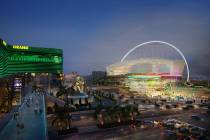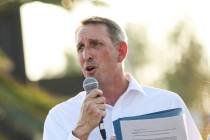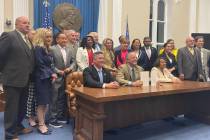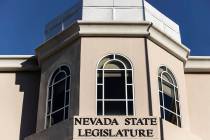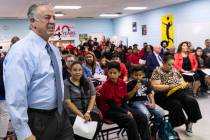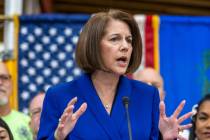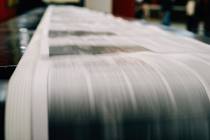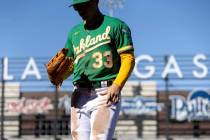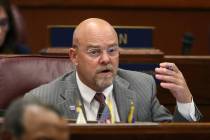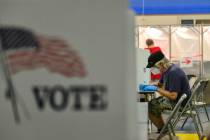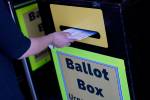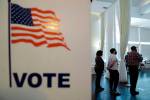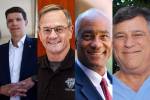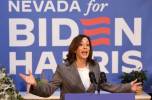I voted, and not many of you can say that!
What if they gave an election and nobody came?
They kind of just did.
As this is written - on Tuesday, hours before the sparsely used polls close in Nevada - turnout appeared to be lagging. About 117,000 people voted early, either at the polls, by mail or by absentee ballot, about 11 percent of the active registered voters in the state.
Early voting turnout in the past two primaries has exceeded the turnout on Election Day, so total turnout may be less than 220,000 when all is done. If that's the case, then 20.7 percent of active registered voters will have bothered to cast a ballot in the primary election. And don't forget, active registered voters in Nevada represent slightly more than half of the people who are eligible to vote. And eligible voters make up 75 percent of the total number of people the Census says were living in Nevada in 2010.
Bottom line: The primary election was most probably decided by less than 8 percent of the people who live in Nevada. We can call them our "8 percenters."
Then again, it's not as if Nevada politicians gave them many reasons to turn out. The highest profile race on the ballot was a contest among Republicans in the 4th Congressional District to see who has the right to be the underdog against Steven Horsford in the general election in November. On the other side, progressives drew their battle lines in a single state Senate district with a challenge to longtime incumbent John Lee. With a few exceptions, the rest of the ballot wasn't exactly filled with excitement.
There are some who will no doubt suggest the anemic turnout results are proof we should return the primary to September, when the summer heat has begun to subside and people have returned from their vacations. Indeed, Assemblyman Pat Hickey, who proposed the idea in 2011, promises to bring it back to the 2013 Legislature.
The last time the primary was held in September was in 2004, when early voting turnout and Election Day turnout were almost equal. Turnout in that primary was 29 percent. It was 30 percent in 2006, when the primary was held in August, but dropped precipitously to 18 percent in August 2008, perhaps because the marquee contest that year - the race for president pitting Barack Obama and Hillary Clinton against each other - had already been decided in caucuses.
In 2010, with the primary in June, turnout returned to its former levels, 30 percent.
There are plenty of advantages to a June primary, especially for non-incumbents, who will have more time to raise money and campaign. A September primary is better for incumbents, who have a built-in fundraising advantage and would prefer as little time as possible between the primary and general elections.
One change that Nevada may not like to hear is to return the presidential nominating contest to the primary election, instead of breaking it out in a party-run caucus toward the beginning of the year.
Then again, it would likely not make much difference; if Nevada voters were headed to the polls today to signal their presidential preference, they'd have only Mitt Romney and Ron Paul from whom to choose. (In that matchup, take Paul and the points.)
The bottom line is, we're not Australia, and we don't fine citizens for failing to vote. History, and elections, are made by those who show up. The fewer the people, the greater the voice for the rest of us, sporting our blue "I voted" stickers.
Steve Sebelius is a Review-Journal political columnist and author of the blog SlashPolitics.com. Follow him on Twitter (@SteveSebelius) or reach him at (702) 387-5276 or ssebelius@reviewjournal.com.








